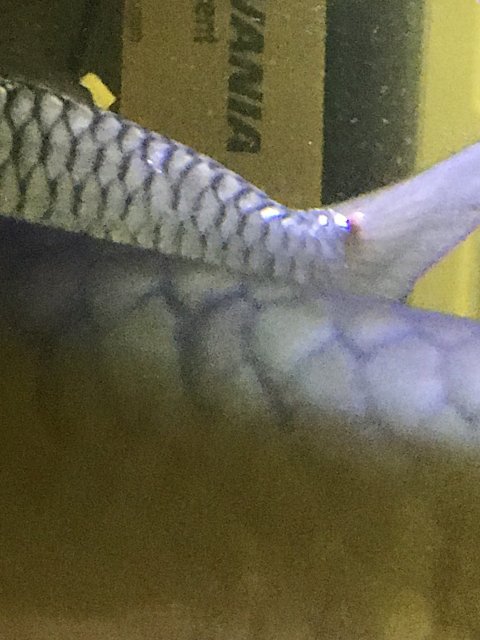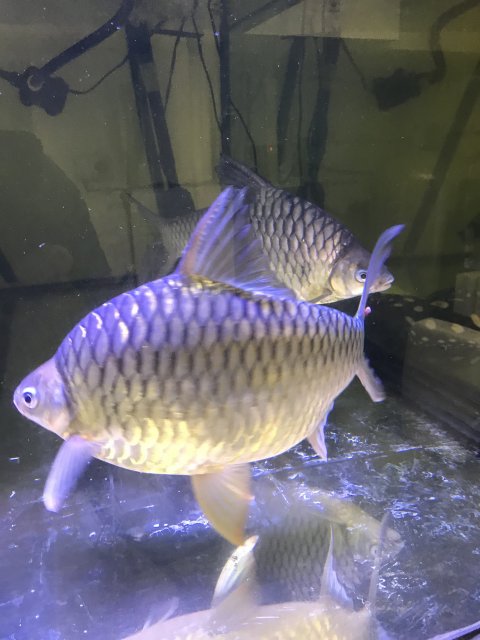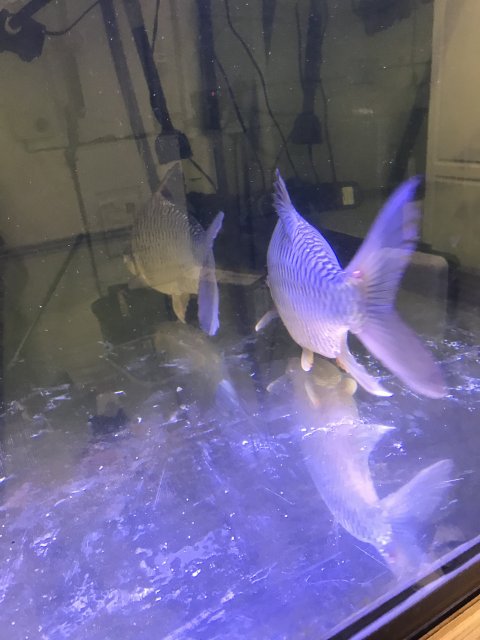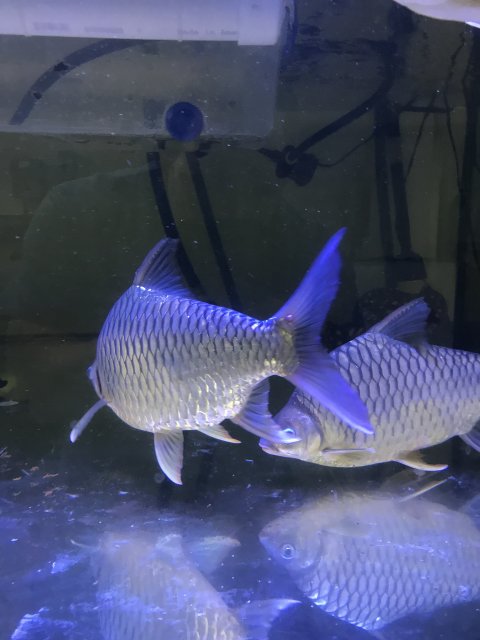Growth on tinfoil, what is it?
- Thread starter Orthopod
- Start date
I agree, it is fairly common in freshwater fish these days. Lymphocystis is viral so there is really not much in the way of treatment for it. With clean water and low stress it should go away on it's own, but it can re-occur from time to time if there is an injury or stress from poor water quality or aggression. It rarely causes any serious issues for the infected fish, but there is a risk of the virus spreading to other tank inhabitants of the tank.Looks like lymphocystis. Would just monitor.
It’s like the common cold for aquarium fish.....so yes it can spread to ur other fish.Thanks.
Can stingrays catch it?
I have 100 gallon sump, ultima 2000, fx6, along with another cannister and 2 uv filters running on a 450. I’m not sure how much more I could filter this water lol. I change half the volume once per week.
Thx for the infoIt’s like the common cold for aquarium fish.....so yes it can spread to ur other fish.
http://edis.ifas.ufl.edu/fa181
excerpt from the article:
What factors contribute to development and spread of lymphocystis disease?
Lymphocystis is spread by fish-to-fish contact or contact with infected tissues. External trauma from spawning, aggression, parasites, or handling can facilitate infection and spread. In addition, crowding, shipping, and other stressors appear to trigger disease outbreaks. Lymphocystis does not appear to be spread by vertical transmission (i.e., from parents to offspring via infection of eggs or sperm).
Although all contributing factors are not known, there do appear to be different genetic variants or possibly "species" of Lymphocystivirus. Each of these affects a different group of fish. Because the virus that causes lymphocystis has been difficult to work with, experts have only officially assigned one Lymphocystivirus species, Lymphocystis disease virus 1 (LCDV-1). Several other variants have been suggested and may be determined to be separate species (including LCDV-2, LCDV-C), but these have not yet been officially accepted by all virus experts.
Based on clinical observations of mixed species groups and other anecdotal evidence, there may be additional strain variations and/or differences in individual fish species sensitivity to infection. In mixed natural or aquarium populations of fish, typically only one or two species will be infected. However, in experimental settings, multiple species can be infected by direct exposure to infected tissues.
excerpt from the article:
What factors contribute to development and spread of lymphocystis disease?
Lymphocystis is spread by fish-to-fish contact or contact with infected tissues. External trauma from spawning, aggression, parasites, or handling can facilitate infection and spread. In addition, crowding, shipping, and other stressors appear to trigger disease outbreaks. Lymphocystis does not appear to be spread by vertical transmission (i.e., from parents to offspring via infection of eggs or sperm).
Although all contributing factors are not known, there do appear to be different genetic variants or possibly "species" of Lymphocystivirus. Each of these affects a different group of fish. Because the virus that causes lymphocystis has been difficult to work with, experts have only officially assigned one Lymphocystivirus species, Lymphocystis disease virus 1 (LCDV-1). Several other variants have been suggested and may be determined to be separate species (including LCDV-2, LCDV-C), but these have not yet been officially accepted by all virus experts.
Based on clinical observations of mixed species groups and other anecdotal evidence, there may be additional strain variations and/or differences in individual fish species sensitivity to infection. In mixed natural or aquarium populations of fish, typically only one or two species will be infected. However, in experimental settings, multiple species can be infected by direct exposure to infected tissues.










